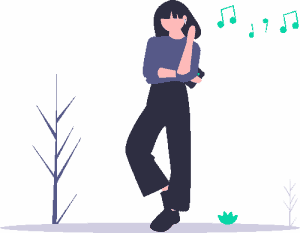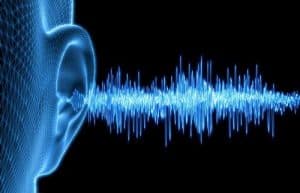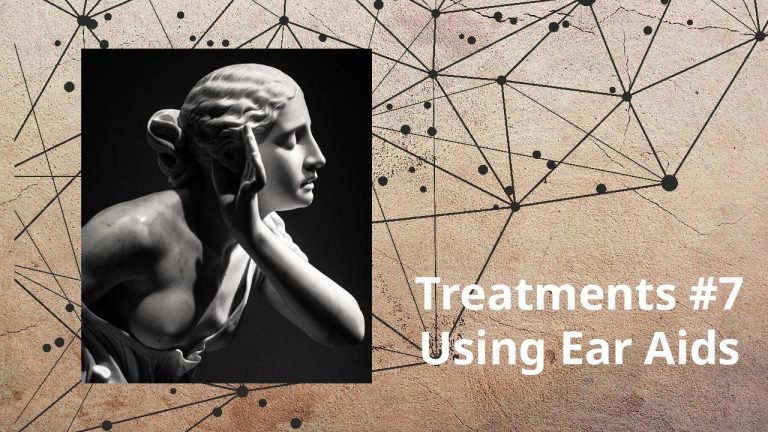Treatments# 7: Using Ear Aids
Today, many hearing aid manufacturers include tinnitus solutions in their hearing aids to help patients regain their hearing peace.
Known as “tinnitus noiser” or “tinnitus masker”, these tinnitus solutions are now offered on many high-end hearing aids for personalised hearing comfort day and night.
These hearing aids can help patients with tinnitus with or without hearing loss and can also be used as a complement to the treatment of hearing loss if this is the case.
Different tinnitus treatment techniques using audio tools:
- Notched Audio Therapy,
- Acoustic Coordinated Reset (ACRT) Therapy,
- The Tomatis © Method,
- Functional Sound Therapy
As well as other techniques using a noise generator:
- Tinnitus Retraining Therapy (TRT),
- Sequencing Sound Therapy.
have already been described in the post: Tinnitus Treatments #3 – Audio Solutions.
These audio solutions do not use hearing aids.

Hearing aids.
This type of solution is generally adopted when tinnitus is caused by a loss of hearing.
It has been proven that when a person’s hearing is impaired, this mechanically leads to a deficit in nerve stimulation. The auditory system is then inclined to intensify its activity in order to compensate for this initial loss. It is this hyperactivity that is at the origin of the parasitic signals suspected of causing tinnitus symptoms.
The prosthesis, by re-establishing a semblance of normalized hearing, would help to contain and then reduce the level of hyperactivity of the auditory system.
Care adapted to each patient.
The audioprosthesist must take several parameters into account before choosing the most suitable hearing aid.
Indeed, each patient has a different tinnitus and a different hearing condition.
These data will be quantified thanks to:
- A high definition tinnitus test.
- A THI questionnaire to assess the patient’s emotional state.
This assessment will allow the hearing care professional to personalise the treatment.
In cases associated with hearing loss, the corrective hearing aid provides sound stimulation to relieve the sensation of tinnitus. Stimulation of the auditory cortex in the area of the tinnitus would compensate for the hearing loss that caused it.
The hearing care professional ensures that the correction is adjusted to remain within the patient’s comfort zone for input signal compression.
For tinnitus patients without apparent hearing loss, a different correction will be used.
It has been shown that 80% of tinnitus patients in this case actually have very slight hearing losses.
These micro-losses are actually micro-lesions of the hair cells in the inner ear. Only a high definition audiometry can detect such slight hearing losses. These micro-losses, which can be the cause of tinnitus, can be at least partially corrected by a hearing aid.

The noise-generating hearing aid
Depending on the tinnitus assessment, a tinnitus masking system using coloured noise can be designed to suit the patient.
High definition tinnitus will allow the adjustment of the coloured noise to the unique case of the patient.
Unlike tinnitus, which is an annoying noise that the patient cannot control, coloured noise is a tolerable sound that the patient can control. The user will be able to adjust the signal by increasing, decreasing or removing it completely.
The coloured noise generator will divert the brain’s attention to a known sound signal and thus inhibit the tinnitus.
How colour noise masking works.
According to the principles of psychoacoustics, a low-pitched sound can mask a high-pitched sound and any sound can be masked by a sound of a similar frequency.
Research has adapted these principles to the treatment of tinnitus, which, as a sound, can be masked by another sound of close frequency.
Stimulation by a coloured noise will also focus the auditory attention on this noise and no longer on the tinnitus: here we find a classic scheme of attenuation of the discomfort by a nearby noise.
After a certain time, the noise of the tinnitus is considered insignificant by the brain which “reduces” it. Thanks to the noise generator, some patients do not even perceive the tinnitus anymore.
However, this treatment requires motivation, diligence and time. The familiarisation phase is sometimes long and the sound simulation should be carried out for at least two hours daily over a period of six months to be effective.
In order to achieve maximum effectiveness, hearing aids and built-in noise generators should be fitted for you by a hearing care professional. This ensures that each component is perfectly matched to your individual needs.
This applies to the comfort as well as the characteristics of the hearing aid and the tinnitus noiser.
Different types of coloured noise.
Coloured noise is a neutral, continuous, random signal that is created from white noise.
White noise is a signal that has a constant power over any band of the spectrum. For example, the frequency range from 40 to 60 Hz contains the same power, or the same amount of energy, as the range from 4000 to 4020 Hz. In practice, a signal is said to be “white” if it has a uniform, or flat, spectrum in a defined frequency band, such as the frequency range perceived by the human ear, or the working range of audio/video equipment.
Coloured noise is created by applying a spectrum filter to white noise, i.e. by applying frequency-dependent changes to the white noise.
There are different types of coloured noise, the main ones being:
‘Red noise’, or ‘Brown noise’ refers to sound with a loudness that decreases by 6 dB per octave as the frequency increases.
Pink noise: The sound power of pink noise, compared to white noise, decreases by 3 dB per octave as the frequency increases.
Blue noise: the sound power increases by 3 dB per octave as the frequency increases.
Violet noise: the sound power increases by 6 dB per octave as the frequency increases .
Grey noise: Grey noise differs from other types of noise because it sounds the same to the human ear at all frequencies. It is in fact white noise processed taking into account the specific characteristics of the human ear (Fletcher-Munson curve).




